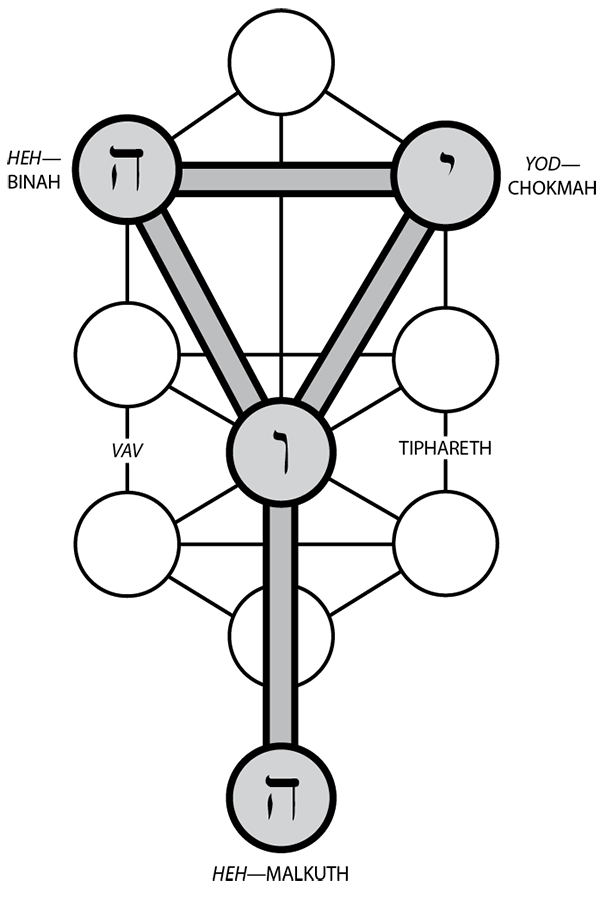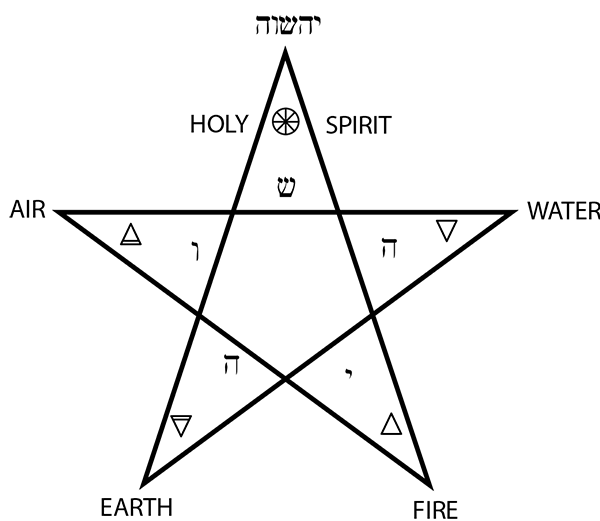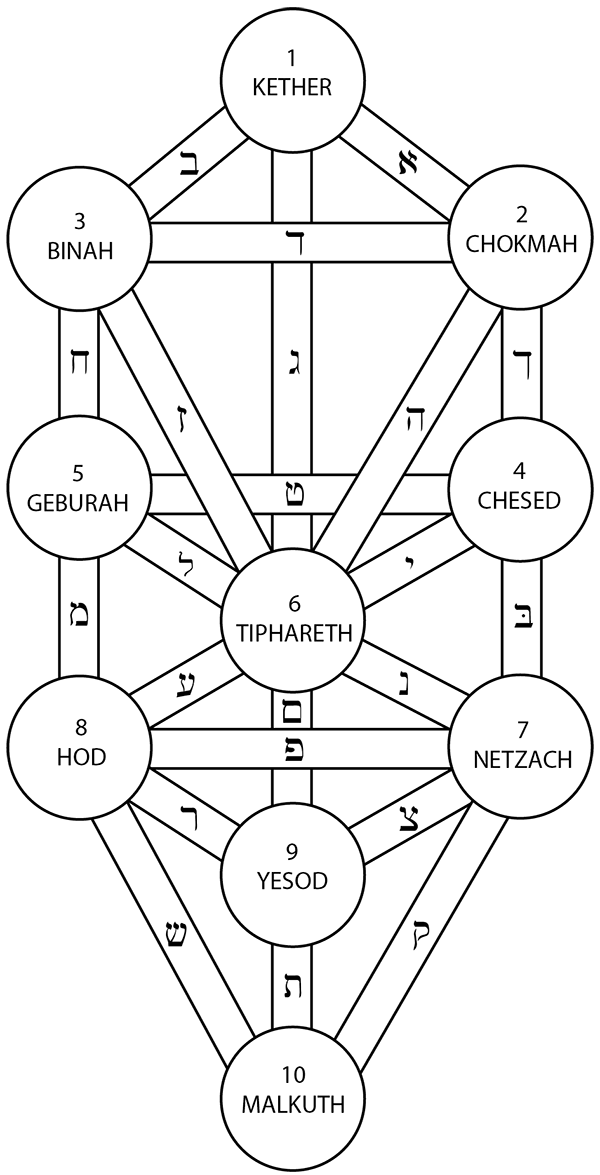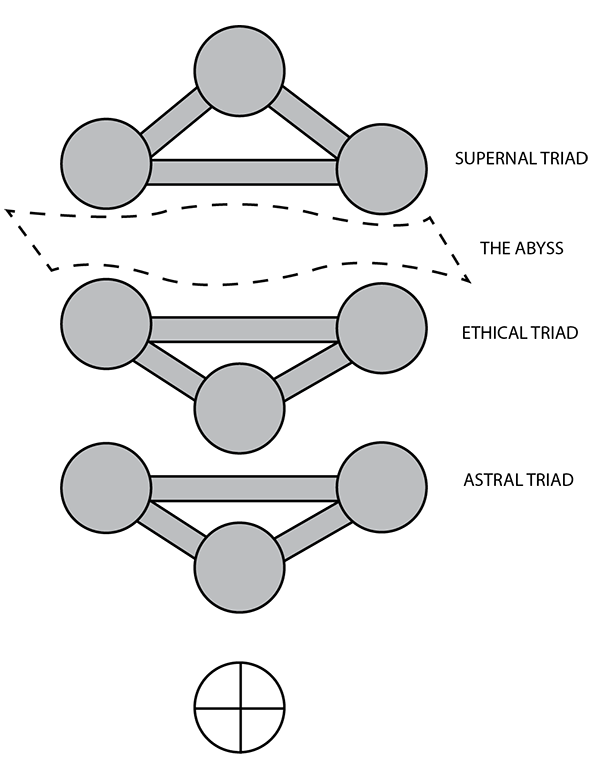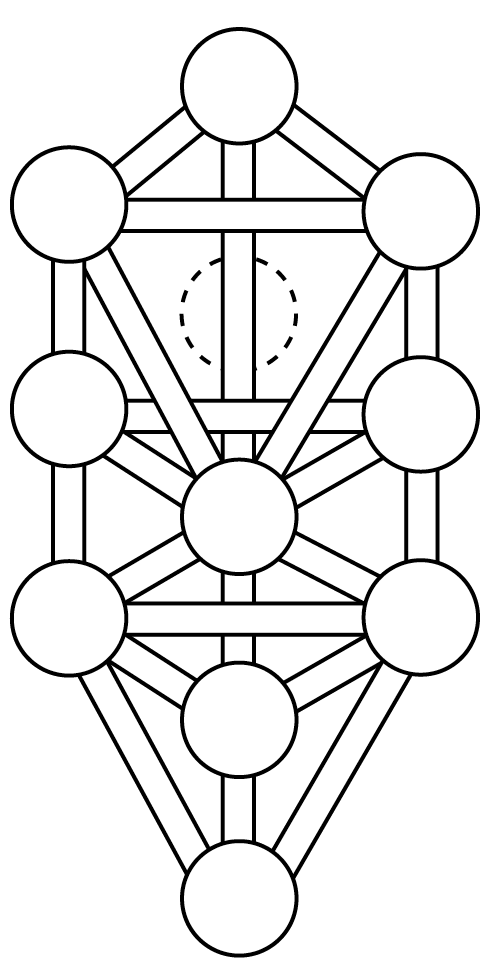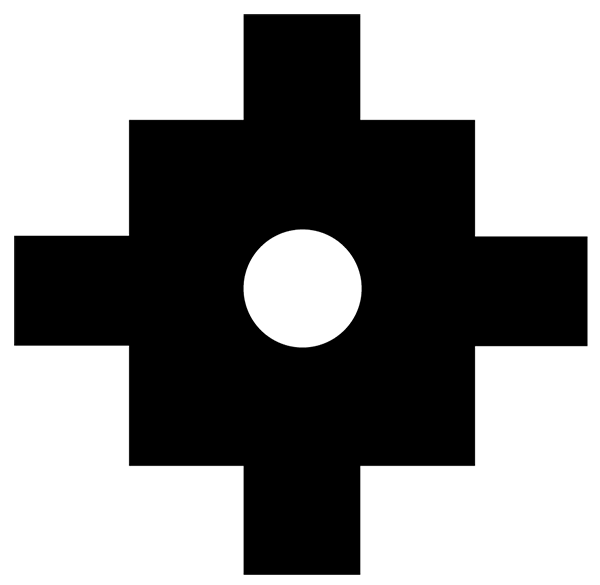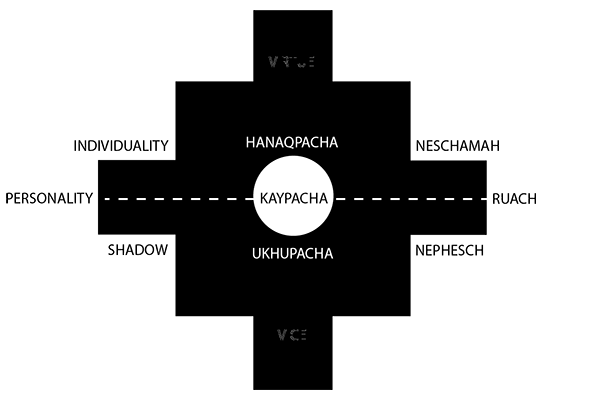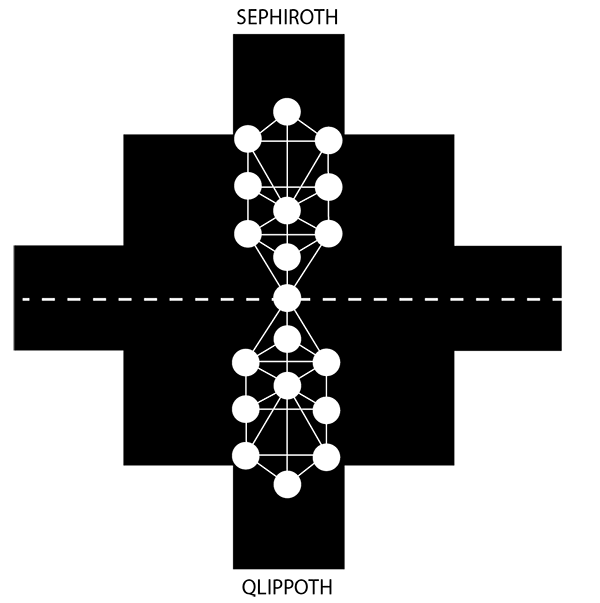TOPOGRAPHY OF THE
INNER WORLDS
Esoteric tradition declares that as soon as a mind is sufficiently advanced to be able to grasp its significance, it is made aware of the esoteric theory of evolution, so that, knowing the plan, it may be able to co-operate with the work. But long before the individual is ripe for the conscious realisation of this great task, his mind is being schooled and prepared in readiness.
—dion fortune, the training & work of an initiate
Just as an astronaut must study the physics of outer space in order to survive, so too must a psychonaut be well versed on the landscape of inner space. A deeper analysis is absolutely required before embarking upon an initiatory pathworking on the Tree of Life.
The absolute goal of the Great Work is referred to in a variety of different ways: the philosopher’s stone, the elixir vitae, the Chemical Marriage, as well as the Knowledge and Conversation of the Holy Guardian Angel. In the mystical Judaic tradition of Qabalah, it is known as “Adam Kadmon.”
Adam Kadmon is the Heavenly Man, the essence of the ten Sephiroth as an undivided unity. The objective of the Great Work is the realization and experience of this state of being, the mind and body in union. This is the meaning of yoga in Eastern terms. In the Western Mystery Tradition, however, it is designated by the God-name formula tetragrammaton, comprised of the Hebrew letters Yod, Heh, Vav, and Heh (YHVH):

Over time this traditionally unutterable name came to be known as Yahweh. This formula can be laid out upon the Tree of Life to gain insight on how the Adam Kadmon concept is achieved via the marriage of the conscious and subconscious self as described in alchemy. In Judaism each letter in the Hebrew language holds a wealth of meaning, as well as a mathematical equivalent (known as gematria). In fact, some speculate the Torah is basically one giant formula whose meaning is lost if the Bible is to be taken literally. If we are to break out the letters of the tetragrammaton (Yod-Heh-Vav-Heh) onto the Tree of Life, they would look like this:
The letters displayed onto the Sephiroth in this way convey the alchemical process in its most pristine form. The final Heh in the formula (residing in Malkuth) is referred to as the Unredeemed Virgin or Daughter, symbolizing the subconscious mind of the human being. Earlier, this was referred to as Nephesch, the shadow. As we discussed, this is usually in dire conflict with the conscious mind designated by Vav in Tiphareth, otherwise known as the Son, dubbed earlier the Neschamah, the individuality. Confusion and disruption of one’s total consciousness is the result of this conflict, causing a fog of bewilderment for the personality (Ruach) in Yesod. The task of the Great Work is reconciliation of the individuality (Vav) with the shadow (the final Heh), thus establishing equilibrium within the personality.
Alchemically, this marriage between the Son and Unredeemed Virgin results in the impregnation of the Mother (the first Heh), which resides in Binah, resulting in the meaning of that Sephirah: understanding. Only through understanding can the true wisdom of the Father in Chokmah arise within the human (Yod).
Understanding + Wisdom = Purpose of Life Divined
Taking this one step further is the formula for the pentagrammaton. According to gematria, the Hebrew letter Shin is equal to the number 300, which is the embodiment of the Hebrew phrase Ruach Elohim, meaning “Spirit of the Gods”:

Therefore, Shin is ascribed to the essence of Holy Spirit as described in the New Testament (in Hebrew, Shechinah). Engaged in this process of the Chemical Marriage, a reception (Qabalah) is happening in which the descent of the Holy Spirit fills the cup that is the initiate; it the descent of Shin into the midst of the tetragrammaton on an elemental level. That being said, it should be noted that there is an elemental designation to YHVH:
• Yod: Fire
• First Heh: Water
• Vav: Air
• Final Heh: Earth
As Shin descends, Yod Heh Vav Heh then becomes Yod Heh Shin Vav Heh, the pentagrammaton; in Hebrew this is designated as Yeheshua (from the Aramaic Yeshua), related to the personification of Christ. This is where the glyph of the pentagram actually comes into play in the Western Mystery Tradition; it is a symbol for the emulation, invocation, and evocation of the Christ Consciousness on an elemental level.
This is the truest manifestation of Adam Kadmon come into physical form, a newly created being, the adept, or Tzaddik: a righteous one, a saint, or one in whom the birth of Spirit has established equilibrium with the base and unredeemed elements of matter. This depicts the whole of the constitution of man.
But, a more granular understanding of the body of the tree will help provide a framework for this Marriage, this yoga.
Hebrew Aleph Beth
You will notice that an understanding of some Hebrew is necessary for an exploration of the Qabalah. Not only is Hebrew the original language of the Old Testament of the Christian Bible (i.e., the Torah), but in fact the letters of the Hebrew alphabet have a direct correlation to not only the Sephiroth but also the paths on the Tree of Life. Rabbi Rav Berg writes, “The first line of Genesis is interesting though its translation is not entirely accurate. Something indeed was created in the beginning, but it was not Heaven and Earth. We read in the Zohar that two thousand years prior to the Creation spoken of in Genesis, the all-embracing Creation reflected upon and brought into being the twenty-two energy-intelligences that constitute the master communications system through which all subsystems of energy evolve, and which today are expressed as the letters of the Hebrew Alef Bet [alphabet].” 48
As each one of these letters has its own numeric value, and intrinsic meaning, so too does each have an exact correlation with each of the paths on the tree. The correlations are as follows:
|
Value |
Letter |
Letter Name |
Name Meaning |
Path |
|
1 |
|
Aleph |
Ox |
Path 11, Kether to Chokmah |
|
2 |
|
Beth |
House |
Path 12, Kether to Binah |
|
3 |
|
Gimel |
Camel |
Path 13, Kether to Tiphareth |
|
4 |
|
Daleth |
Door |
Path 14, Chokmah to Binah |
|
5 |
|
Heh |
Window |
Path 15, Chokmah to Tiphareth |
|
6 |
|
Vav |
Nail or Hook |
Path 16, Chokmah to Chesed |
|
7 |
|
Zain |
Sword |
Path 17, Binah to Tiphareth |
|
8 |
|
Cheth |
Fence |
Path 18, Binah to Geburah |
|
9 |
|
Teth |
Serpent |
Path 19, Chesed to Geburah |
|
10 |
|
Yod |
Hand |
Path 20, Chesed to Tiphareth |
|
20 |
|
Kaph |
Fist |
Path 21, Chesed to Netzach |
|
30 |
|
Lamed |
Ox-goad |
Path 22, Geburah to Tiphareth |
|
40 |
|
Mem |
Water |
Path 23, Geburah to Hod |
|
50 |
|
Nun |
Fish |
Path 24, Tiphareth to Netzach |
|
60 |
|
Samech |
Prop |
Path 25, Tiphareth to Yesod |
|
70 |
|
Ayin |
Eye |
Path 26, Tiphareth to Hod |
|
80 |
|
Peh |
Mouth |
Path 27, Netzach to Hod |
|
90 |
|
Tzaddi |
Fishhook |
Path 28, Netzach to Yesod |
|
Value |
Letter |
Letter Name |
Name Meaning |
Path |
|
100 |
|
Qoph |
Back of Head |
Path 29, Netzach to Malkuth |
|
200 |
|
Resh |
Head |
Path 30, Hod to Yesod |
|
300 |
|
Shin |
Tooth |
Path 31, Hod to Malkuth |
|
400 |
|
Tau |
Cross |
Path 32, Yesod to Malkuth |
Table 1: Hebrew Letters
Note that the numbering of the paths begins at 11 and ends at 32, equaling twenty-two in total. It is generally considered that the first ten “paths” are the Sephiroth themselves. Therefore, we have a complete numbering as denoted in the first passages of the Sepher Yetzirah as translated by William Westcott: “In thirty-two wonderful Paths of Wisdom did Jah … engrave his name.… Ten are the ineffable Sephiroth. Twenty-two are the Letters, the Foundation of all things.” 49
Each of these paths, each of these letters, holds a wealth of meaning. It is not just the emanations of the Sephiroth that carry value in the Great Work of the Qabalah, but the paths as well. Rabbi Berg says the twenty-two Hebrew letters are the primary symbols that God enacted manifestation through: “Twenty-two sublime tonalities emanated, and it pleased the Lord to use them to fashion His universe.… The Lord created all of the souls through these twenty-two emanations, each of whom was a trading partner with Him, as stones hewed from mountain are of the mountain but are not the mountain itself. Thus, He could derive pleasure from imparting, just as they would derive pleasure from receiving.” 50
Tarot
The tarot is perhaps one of the most misunderstood divinatory tools. Its actual significance has been reduced to Hollywoodesque gypsy fortune-telling. Alphonse Louis Constant, whom many call the grandfather of the Western Mystery Tradition, was a nineteenth-century French socialist and Christian mystic, otherwise known as Éliphas Lévi. Lévi created one of the foundational syncretic tomes of the movement of Western Mystery initiatory practices, called Transcendental Magic: Its Doctrine and Ritual. In it, he unveils the legendary origin of tarot as the heart of all spiritual—indeed all human—traditions.
Éliphas Lévi’s Transcendental Magic is one of the first instances in the history of the Western Mystery Tradition in which a direct correlation between the tarot and the actual paths on the Tree of Life is made. In fact, Lévi has referred to the tarot as the foundation of all esotericism:
All religions have preserved the remembrance of a primitive book, written in hieroglyphs by the sages of the earliest epoch of the world. Simplified and vulgarized in later days, its symbols furnished letters to the art of writing, characters to the Word, and to occult philosophy its mysterious signs and pantacles. This book, attributed by the Hebrews to Enoch, seventh master of the world after Adam; by the Egyptians to Hermes Trismegistus; by the Greeks to Cadmus, the mysterious builder of the Holy City: this book was the symbolical summary of primitive tradition, called subsequently Kabalah or Cabala, meaning reception. The tradition in question rests altogether on the one dogma of Magic: the visible is for us the proportional measure of the invisible.51
This “primitive book, written in hieroglyphs” is indeed Lévi’s reference to the tarot, and describes it not just as a “symbolical summary” of ancient wisdom traditions (i.e., shamanism) but also equates Qabalah (or “Kabalah”) with those ancient practices.
To the Golden Dawn’s credit, they formulized the usage of the tarot within the Tree of Life in concrete, tangible ways that Lévi only seemed to allude to. The self-acclaimed Beast 666, Aleister Crowley—an initiate of the Golden Dawn who later created his own magical fraternity, Ordo Templi Orientis—had even gone on to say that Lévi made mistakes in his attributions between the tarot trumps and the Hebrew letters in order to still keep the occult secrets hidden and in code. However the case may be, whatever manuscripts the Golden Dawn stumbled upon served to solidify and ritualize the attributions in a way that made sense. The tarot has a habit of being the subject of uncertainty throughout its history, and even in its beginnings.
Tarot has a mysterious history; as such, it is difficult to pinpoint its origin and evolution throughout time. Many authorities (like Lévi) trace its inception to the Egyptian Mysteries. Some say it originally existed as the Book of Thoth but was burned in the Library of Alexandria, thus taking on a new form in a series of pictures and symbols to shroud their true meaning from persecution. However, the incarnation of the tarot we are most familiar with today came from sixteenth-century Europe—most notably Italy, France, and Spain. The tarot has evolved into various styles and paradigms, and regardless of the historical evidence—or lack thereof—pertaining to it, the true power of the cards and their symbols comes from their practical application.
This is true of both the tarot and the Tree of Life. The power of any tool comes from its usage rather than when or where it was formulated. But, again, what exactly is the tarot? And what is its purpose?
“The tarot will teach you how to create the soul,” says Alejandro Jodorowsky in his alchemical cinematic masterpiece The Holy Mountain.52 The tarot is, in a nutshell, a pictorial key to the entire universe, both inner and outer space. If the Tree of Life is the design, and Hebrew its language, the tarot comprises the images that unlock the many vistas of experience existing in initiation.
The tarot is a deck of cards on which the traditional deck of playing cards is based. Within a single deck of the tarot are four suits—comprised of fourteen cards each—and twenty-two trump cards, equaling a total of seventy-eight cards altogether. The suits are divided into wands, cups, swords, and pentacles (or coins). Each of these suits of course holds a specific meaning, along with an elemental and Qabalistic correlation. Previously, we discussed three worlds or levels of existence. In Qabalah, the Sephiroth of the Tree of Life have a four-fold nature, traditionally called the four worlds. Each Sephirah is expressed not as a unit but as a composite of these four expressions. These worlds correspond to the four elements, and thus the four suits of the tarot, and are best understood as different levels of experience of the tree.
The four suits of the tarot are as follows:
• Wands: The suit of intuition that gives birth to the creative process; fire is what propelled the evolution of our species. Its gender association is male.
Element: Fire, the Pachakuti mesa association being Intitayta (Father Sun)
Qabalistic World: Atziluth, the Archetypal World, which can only be expressed through the Ten Holy Names of God, the Divine Emanations; the most abstract of the four worlds
Hebrew Letter: Yod
• Cups: The suit of intuition that represents feeling and emotion; cups are the receptacles of ever-shifting expression. Its gender association is female.
Element: Water, the Pachakuti mesa association being Mamakilla (Grandmother Moon)
Qabalistic World: Briah, the World of Creation, where the Divine Emanations can begin to manifest through the Ten Mighty Archangels; also called the World of Thrones
Hebrew Letter: Heh
• Swords: The suit of intellect, logic, the seeking of truth; swords cut through deception and illusion. Its gender association is male.
Element: Air, the Pachakuti mesa association being Wiracocha (Father Sky/Great Spirit)
Qabalistic World: Yetzirah, the World of Formation, where the Divine Emanations become fully manifest through a variety of beings, the Angelic Host
Hebrew Letter: Vav
• Pentacles (Coins): The suit of sensation and physicality; pentacles represent the completion of existence made manifest. Its gender association is female.
Element: Earth, the Pachakuti mesa association being Pachamama (Mother Earth)
Qabalistic World: Assiah, the World of Action, where the Divine Emanations manifest as the base elements of earthly matter
Hebrew Letter: Heh
Notice that the Hebrew letter associations in order of the four worlds, from archetype to action, form Yod-Heh-Vav-Heh, the tetragrammaton. Within each suit, the numerical values from aces to tens represent the ten Sephiroth; therefore, each suit is the totality of the expressions of the Tree of Life via the four worlds of the Qabalists, as well as the elements and the totality of the most Holy Name of God.
The other cards of the suits are the court cards: kings, queens, knights (princes), and pages (princesses). These sixteen cards find their inherent value through both their suit association and rank. The kings are obviously male gender cards, representing a mastery, command, or dominion over that particular suit. Queens are obviously female and are less forceful than the kings, though they still represent a mastery of the suit, just via more internal processes. Knights are primarily male and represent the most extreme expressions of that suit, however positive or negative those expressions may be. Pages have a strong female association and are a more passive or playful expression of the suit. These four court cards correlate as well to the Sephiroth and four worlds: king (Yod, Chokmah), queen (Heh, Binah), knight (Vav, Tiphareth), and page (Heh, Malkuth).
The trumps, twenty-two in total, are the remaining cards. Numbered zero through twenty-one, they essentially tell the story of the human soul, of human evolution, of the entire process of life, death, and everything in between as well as beyond. They are the topography of the universe in man. Their significance cannot be overstated. Acting as the primary hieroglyphs of the tarot story, the trumps do not adhere to any suit. Although each trump card constitutes a single image (or symbol), the trumps are also all connected in sequence to communicate a larger composite. In the least, each trump image is an archetype for a different expression of human consciousness; at most, they are keys to unlock the Mysteries of the unknown.
Although there is much debate on how the tarot trumps correspond to the Tree of Life, they are most normally understood to align with the paths. Seeing as how there are twenty-two trumps and twenty-two paths, they are usually mapped to each other accordingly:
|
Path |
Trump Number |
Trump Name |
Hebrew Letter |
Path |
|
11 |
0 |
The Fool |
|
Path 11, Kether to Chokmah |
|
12 |
1 |
The Magician |
|
Path 12, Kether to Binah |
|
13 |
2 |
The High Priestess |
|
Path 13, Kether to Tiphareth |
|
14 |
3 |
The Empress |
|
Path 14, Chokmah to Binah |
|
15 |
4 |
The Emperor |
|
Path 15, Chokmah to Tiphareth |
|
16 |
5 |
The Hierophant |
|
Path 16, Chokmah to Chesed |
|
17 |
6 |
The Lovers |
|
Path 17, Binah to Tiphareth |
|
18 |
7 |
The Chariot |
|
Path 18, Binah to Geburah |
|
19 |
8 |
Strength |
|
Path 19, Chesed to Geburah |
|
20 |
9 |
The Hermit |
|
Path 20, Chesed to Tiphareth |
|
21 |
10 |
Wheel of Fortune |
|
Path 21, Chesed to Netzach |
|
22 |
11 |
Justice |
|
Path 22, Geburah to Tiphareth |
|
23 |
12 |
The Hanged Man |
|
Path 23, Geburah to Hod |
|
24 |
13 |
Death |
|
Path 24, Tiphareth to Netzach |
|
25 |
14 |
Temperance |
|
Path 25, Tiphareth to Yesod |
|
26 |
15 |
The Devil |
|
Path 26, Tiphareth to Hod |
|
27 |
16 |
The Tower |
|
Path 27, Netzach to Hod |
|
28 |
17 |
The Star |
|
Path 28, Netzach to Yesod |
|
29 |
18 |
The Moon |
|
Path 29, Netzach to Malkuth |
|
30 |
19 |
The Sun |
|
Path 30, Hod to Yesod |
|
31 |
20 |
Judgement |
|
Path 31, Hod to Malkuth |
|
32 |
21 |
The World |
|
Path 32, Yesod to Malkuth |
Table 2: The Paths
Of the entire tarot, the trumps are studied the most, as traversing the paths on the Tree of Life is a vital component to the process of the Great Work within the Western Mystery Tradition. Each trump will be covered in more detail with each path in part III, “SIMULACRA.” Regardless, for now, they just need to be understood as a crucial ingredient in the apparatus of the tree’s topography.
Triads
While traversing the Tree of Life, it is important to be aware of the various relationships among certain sets of Sephiroth and paths. Within the tree are three distinct groupings of Sephiroth called the Triads.
Including all the Sephiroth, except for Malkuth, the triads are groupings of three Sephiroth each that represent distinct levels of the universe. In essence, they reveal the primary levels, or stages, of creation. The triads break down like this:
• The Supernal Triad: Composed of Kether, Chokmah, and Binah, the Supernal Triad represents, really, the only True Reality. All else in the universe is but a reflection of this one triad. It is the Supreme Godhead and can never truly be known. We can only conjecture its existence through symbols, abstractions, and metaphors.
• The Ethical Triad: Composed of Chesed, Geburah, and Tiphareth, this is the first, inverted reflection of the True Reality. The Ethical Triad is the realm of the universe in which the principles of manifestation are first generated; in essence, where the blueprints of matter are drawn up.
• The Astral Triad: Composed of Netzach, Hod, and Yesod, the Astral Triad is yet another, though denser, simulacrum of the inverted reflection that is the Ethical Triad. If the Ethical Triad is the blueprint of manifestation, the Astral Triad is the machinery that builds the material world.
A study of the triads can give us a sense of how the parts of the tree operate both in the formation of the outer and inner universes. They illustrate how the central Sephiroth—Kether for the Supernal, Tiphareth for the Ethical, and Yesod for the Astral—are actually the primary backbone. The other Sephiroth can be seen as extensions, the polarities that make up the central Sephiroth: Chokmah and Binah for Kether, Chesed and Geburah for Tiphareth, and finally Netzach and Hod for Yesod.
However, there is another aspect of the tree that the triads allow us to see with clarity. Israel Regardie explains this gap very clearly: “The Supernals are separated by a great gulf, the Abyss, from that which lies below them. The Supernals are ideal; the other Sephiroth are actual; the Abyss is the metaphysical gap between. In one sense, they have no connection or relation with the Inferiors, the lower seven Sephiroth, reflected by them—just as space itself is independent of, and unaffected by, whether there is or is not anything manifested within its emptiness.” 53
This gulf of separation is the eternal separator between God and matter. Whatever passes through the Abyss is completely dead to what it once was before, for nothing of the Supernal Triad can be truly understood in the lower two triads, just as nothing in the lower two triads can withstand the purity of the Supernals. Regardie is actually referring to a space upon the tree where there resides an eleventh, invisible Sephirah.
Daath
Some Qabalists refuse to even acknowledge Daath (or Daat)—which means “knowledge” in Hebrew—the non-Sephirah prevalent in the space of the Abyss on the Tree of Life. Between the Supernal and Ethical realms is the void of the Abyss, where Daath resides.
Daath is the realm where the elements of existence that lie beyond our understanding become assimilated into the faculties of the human mind. Its name means “Knowledge,” and as such it is the destination for all those who wish to “Know Thyself.” Israel Regardie extrapolates on Daath’s role and why knowledge is the tenet most ascribed to this area, this void within the Tree, in The Golden Dawn: “Fundamentally it is the ascent of the Dragon or, if you wish, an upwelling of the Unconscious archetypes—a highly dangerous and unbalancing ascent, until they are assimilated to consciousness—which first renders Daath a possibility. It is the Fall which is responsible for the acquisition of self-knowledge.” 54
The symbol of the dragon is a useful image here in all esoteric and alchemical traditions. The dragon is emblematic of the struggles of humankind with their own inner selves, as a knight battles the winged fiend in tales of old. Carl Jung often postulated that the dragon reveals itself in many forms through dreams: a demon, animal, old man, cave, or even a walled garden. The dragon is a common theme in the work of psychotherapist and shamanic practitioner Dr. José Stevens, specifically as a means of turning one’s own internal fears and personality patterns into objects of personal power. This is, in actuality, the goal of Daath, of the entire process of the Great Work itself. Stevens suggests the task of initiation is to submit the dragon (the baser elements of the shadow) to the Will of the individuality (higher self). Stevens writes,
A dragon is merely an icon, a powerful image that represents danger and fear, and of course lies in wait on our path to roar out a terrible challenge to our progress. The dragon when first encountered represents fear itself. It is only later, with familiarity, that the dragon may actually give us clues to redemption—the necessary information to transform defeat at its claws to victory and passage. With victory, fear and separation are overcome. Fear flies, and the path leads to a greater reality encompassing unity, knowledge, wisdom, truth, and beauty.55
Daath can be the most uneasy and even dreadful Sephirah to encounter. For as one ascends the Tree of Life in earnest connection with the Supernal realms of being, Daath, the Abyss, is the where the last remnants of oneself—one’s image of oneself especially—is shredded. We see this play out in the biblical story of the Garden of Eden. For as Eve encounters the serpent (dragon), she takes fruit from the Tree of Knowledge (Daath). As she and Adam partake of the fruit (Eve being a personification of Binah and Adam of Chokmah), their nakedness is revealed, and they are ashamed. They see their true selves. As a result, they are cast out of the Garden of Eden, of paradise. This is not a literal account but the mythology of our consciousness.
What comes as a result of this banishment of paradise is a separation between man and woman, and here we are in a world where neither the feminine or masculine are honored together, in balance. However, to return to paradise (the culmination of the Great Work), the serpent must again be reencountered and the Tree of Knowledge passed through. Knowing oneself completely, without shame, is true knowledge, which Colonel Seymour states is the prime maxim of the mystery schools: “Over the doorway of many of the ancient temples was written Gnothi Se Auton or, Nosce Te Ipsum, Know Thyself. This psychological process is sometimes called ‘the unveiling of the self,’ sometimes ‘the knowledge and conversation of one’s holy guardian angel,’ or higher self. This is the first great goal. Its essential symbols are to be found on the Qabalistic Tree of Life … important symbols for the trained mind.” 56
To know oneself, dragons and all, is the motto of the Great Work. Entraining our mind to various symbols in the Mystery Traditions will incorporate all elements of the self into a whole. This is the essence of Daath, the non-Sephiroth of the Tree of Life.
The Chakana
It is important to understand that the Sephiroth and these levels of creation are not hierarchal levels of heaven that are separated from the “real world” and which we must attain through various stages of afterlife to get to God. This is an illusion beset on us from our modern way of life and mainstream institutions, in which one must climb the ladder of success (i.e., cleansed of sin) in order access the upper management of the heavens. This line of thinking can lead a soul’s evolution into a trap, even beyond death, that contributes to our modern predicament of disharmony with the natural world.
All the Sephiroth—both individually and as a collective—encompass both positive and negative aspects of existence. In the Western Mystery Tradition, this is known as each Sephirah containing both a virtue and a vice. In the indigenous traditions of Peru, this concept is best represented by what is known as the Andean cross: the chakana.
Embedded within the ancient architecture of Peru, the chakana is a multileveled symbol that encompasses the astronomical means of reflecting the Southern Cross, the most significant constellation in the night sky to the Incas and other Andean people. The Quechua chakana means “stair” and comes from the word chakay, which means “to cross.” The multitiered formation of the chakana not only emulates the crossing of the cardinal points of the four directions but was also revered as a pattern of creation. For instance, the tiers (or stairs) of the chakana form twelve points, each representing a month of the calendar year in mapping the sun’s solstices and equinoxes.
Further, the chakana represents a bridging (or crossing) of the three worlds in the Andean cosmology (as discussed in chapter 3), converging into one universal whole. In the shamanic traditions of Peru, the Ukhupacha (Lowerworld), Kaypacha (Middleworld), and Hanaqpacha (Upperworld) are not three disparate realities that are supposed to exist separate from one another. These pachas are only separate because of our inability to be in harmony with ourselves. Indeed, in the Pachakuti Mesa Tradition, when these three pachas are united within and without—as emulated in the chakana—the Qoripacha (Golden Age) will arise on earth, an era of peace and tranquility.
Dante and Orlando Salas Delgado, brothers and archeological researchers from the National University of Saint Anthony the Abbot of Cusco, refer to the chakana as “la Flor de la Vida,” which means the flower of life.57 Modern mystic Drunvalo Melchizedek has taught and written extensively about the flower of life as a universal symbol of magic and creation. Manifesting in various forms throughout many cultures, including the mandalas of the East and the medicine wheel of the northern Native Americans, there is indeed a global symbolic pattern representing the totality of the universe. No one symbol is more accurate than another, for they all communicate the same thing: that the entire cosmos is contained within one matrix of being.
In terms of the Tree of Life, let’s revisit the idea of virtue and vice. It is known that for each Sephirah, a virtue and vice is contained. For example, the virtue—the prime attribute of manifestation—for the Sephirah of Hod is truthfulness. Therefore, when one is in alignment with positive attributes of the intelligence of Hod, then one is being truthful with oneself and others. However, it is in this same Sephirah that one’s downfall in truthfulness can be achieved; it is normally the inverse of the virtue that creates the vice, and vice versa. If out of alignment, the vice of Hod manifests as the attribute of falsehood, or dishonesty. Thus, both the virtue (a characteristic of the Hanaqpacha, the individuality, or Neshamah) and the vice (a characteristic of the Ukhupacha, the shadow, or Nephesch) exist within the same sphere of potential (or Sephirah). The playing field where this potentiality takes place is the Kaypacha, where the personality, or Ruach, interacts in the scrimmage of life, choosing between the polarities of virtue or vice.
So, in this sense, the Tree of Life is not a map of heaven. It is both heaven and hell, as well as earth (Malkuth). In chapter 4, I describe the Tree of Life as a roadmap to explore the nature of God. God is the totality of all things: heaven, hell, and everything in between. In Quechua, this is referred to as the Teqsemuyu, the entirety of the universe that is God. God is not something separate from who we are, but we are a part of it. The chakana represents both the entire spectrum of the Tree of Life and its inversion, what the Qabalists call the Qlippoth. The Hebrew word Qlippoth means “shells” or “husks,” and here we can trace the original term for what is known as a demon in occult lore. Demons are merely shells, husks empty and devoid of the Divine, which is what we become if we continually live in vice, rather than virtue. This means we are our own demons and angels at the same time; we are the source for our damnation or salvation. It all hinges on our ability, as initiates, to recognize that we are the microcosmic totality of the macrocosmic universe, the Teqsemuyu. We are and contain both the Sephiroth and the Qlippoth. We are the chakana. As we understand this truth, we pave the path for our own soul’s evolution in consciousness.
48. Berg, Energy of Hebrew Letters, 47.
49. William Wynn Westcott, trans., Sepher Yetzirah: The Book of Formation and the Thirty Two Paths of Wisdom, 2nd ed. (London: Theosophical Publishing Society, 1893), 15.
50. Berg, Energy of Hebrew Letters, 42–43.
51. Éliphas Lévi, Transcendental Magic: Its Doctrine and Ritual, trans. Arthur Edward Waite (Mansfield Centre, CT: Martino Publishing, 2011), 95.
52. Alejandro Jodorowsky, dir., The Holy Mountain (Mexico City, Mexico: Producciones Zohar, 1975), DVD, 115 min.
53. Israel Regardie, A Garden of Pomegranates: Skrying on the Tree of Life, ed. Chic Cicero and Sandra Tabatha Cicero (St. Paul, MN: Llewellyn, 1999), 44.
54. Regardie, Golden Dawn, 34.
55. José Stevens, Transforming Your Dragons: How to Turn Fear Patterns into Personal Power (Rochester, VT: Inner Traditions, 1994), 3.
56. Seymour, Forgotten Mage, 125.
57. Dante Salas Delgado and Orlando Salas Delgado, Arquitecura cósmica inka: Arqueoastronomía (Cusco, Peru: Biblioteca Nacional del Peru, 2016), 188.
